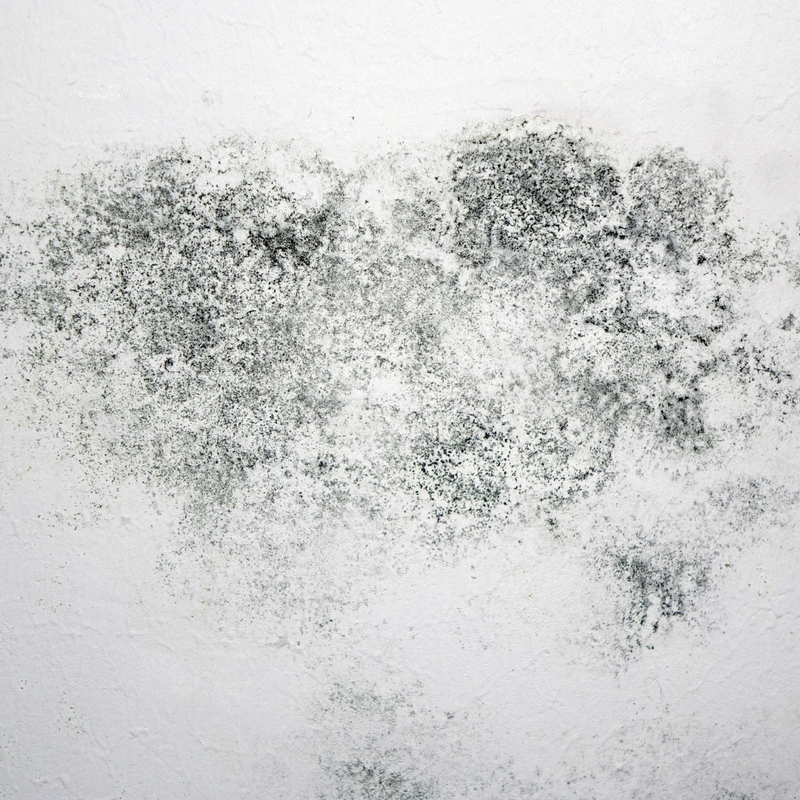Whether you have been flood affected (like us) or are experiencing significant mould in your home or business due to the crazy amount of rain we have had recently, removing and treating mould in the right way is important to prevent recurrence.
After a significant weather event such as the recent floods in the Northern Rivers of NSW and SE Queensland plus rain all across Australia, mould blooms really quickly from inside saturated surfaces and in the residual high humidity. This mould becomes an immediate health hazard. Treating and killing mould thoroughly is important to make your environment safe for you and your family.
Try and remove mould as soon as possible and understand it will take elbow grease plus repeated treatment to do a good job. When treating mould, always wear gloves and a mask to protect yourself, especially from spores.
We’ve combined our knowledge on widespread mould treatment with the latest information from our supporting chemist, and lab studies conducted by a microbiologist to put together the advice and options for you below. This should help with the major mould many of you are dealing with. Reach out on social or through our other channels if you have further questions and we will try and help.
Hydrogen Peroxide – 2-Step Process - A natural and healthy option for very-effective mould killing
Use a 5% solution of hydrogen peroxide (ideally combined with surfactants to help the hydrogen peroxide penetrate the mould). SimplyClean Simply NO Mould works perfectly but our supply is limited after the flood – see end of blog for more information.
Step 1: Spray Simply NO Mould liberally on hard surfaces. Rub in gently, so as not to disturb the mould too much, using a scourer or heavy-duty cloth. Allow to air dry. DO NOT RINSE. This will kill existing mould. Discard, or wash the scourer/cloth thoroughly, and allow to air dry. Take care with eyes by not spraying directly overhead – spray from an angle instead.
Step 2: Two days later repeat. By this time, any untreated spores will have flourished and will be killed with this application.
For further prevention, follow up with:
Step 3: One day later apply a strong solution (50:50) of disinfectant cleaner using a spray or bucket and cloth and leave to air dry.
Disinfectant Cleaner – 2-Step Process - A long-lasting and healthy option for mould killing
Disinfectant cleaner works more slowly than hydrogen peroxide but is very effective and continues to kill over time. SimplyClean Lemon Myrtle or Eucalyptus Disinfectant Cleaners are ideal. For other brands you may need to use a stronger solution than recommended below.
Step 1: Use a 50:50 solution of disinfectant cleaner and apply using a spray, or bucket and cloth, then leave to air dry. DO NOT RINSE.
Step 2: Two days later repeat. By this time, any untreated spores will have flourished and will be killed with this application. This will continue to prevent regrowth.
Chlorine bleach – 3-Step process - A cheap and readily available option
Bleach has the benefit of being cheap and readily available. Remember though, health wise it can cause respiratory irritation, especially when used in large quantities, making this method unsuitable for people with existing respiratory-health conditions.
Step 1: Spray a minimum 4% solution liberally on hard surfaces. Rub in gently, so as not to disturb the mould too much, using a scourer or heavy-duty cloth. Allow to air dry. DO NOT RINSE. This will kill existing mould. Discard, or wash the scourer/cloth thoroughly, and allow to air dry. Take care with eyes by not spraying directly overhead – spray from an angle instead. Take care on skin.
Step 2: Two days later repeat.
Step 3. Two days later repeat again. By this time, any untreated spores will have flourished and will be killed with this application.
For further prevention, follow up with:
Step 4: One day later apply a strong solution (50:50) of disinfectant cleaner using a spray or bucket and cloth and leave to air dry.
Vinegar – 4-Step Process - A cheap but unreliable option
Lab studies have shown vinegar is not readily effective against mould, so it is unreliable for large scale mould treatment. Surfaces have to be cleaned thoroughly when treating with vinegar. If vinegar is your only option, use cleaning vinegar wherever possible, rather than standard food grade vinegar, which is less acidic.
Step 1: Mix 3 parts cleaning vinegar with 1 part water and vigorously clean the mould; a simple spray and wipe will not do the job. Allow to dry thoroughly.
Step 2. When dry, repeat.
Step 3: Repeat above.
Step 4: Your final application.
Finally, about Clove oil...
Clove oil is suitable for removing mould from hard surfaces. It is expensive and comes in tiny quantities, so is unsuitable for mass application. However, if you have plenty to hand….
Mix ¼ teaspoon with 1 litre of water, spray on mould area and leave for 20 minutes. Wipe away residue and repeat until mould has been removed.
It is not proven to work scientifically, although it seems to in practice :) but is definitely not proven to prevent mould spores from being released into the atmosphere to settle elsewhere in the home.
Clove oil is a poison, so keep out of children’s reach.
The above options and methods are for treating the serious widespread mould many are experiencing right now due to recent major weather events. For general mould treatment, you can take a look at our previous blogs for some help.
If you wish to use SimplyClean products for treating your mould, try your local stockist for Simply NO Mould and our Lemon Myrtle and Eucalyptus Disinfectant. We usually supply around 1000+ stores across Australia but call first to check their stock. If you wish to shop online, check out our online partners, whilst our own online store is temporarily closed. If you're a Northern Rivers local, we are at our warehouse cleaning-up and door sales are available, but some products are limited.

